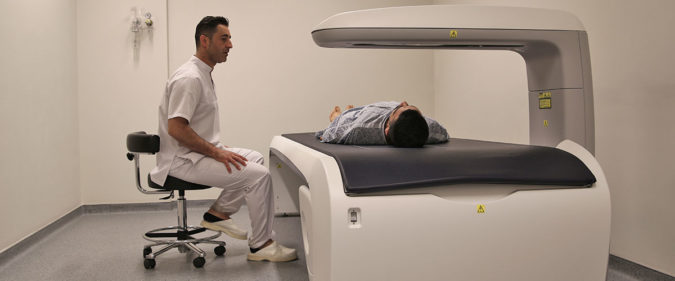DEXA Scan
Area: Radiology Bone Densitometry or Dual-Energy X-Ray Absorptiometry (DEXA) uses a very small dose of ionizing radiation to produce pictures of the inside of the body (usually the lower spine and hips) to measure bone loss. It is commonly used to diagnose osteoporosis and to assess an individual’s risk for developing fractures. DEXA is Simple Quick





